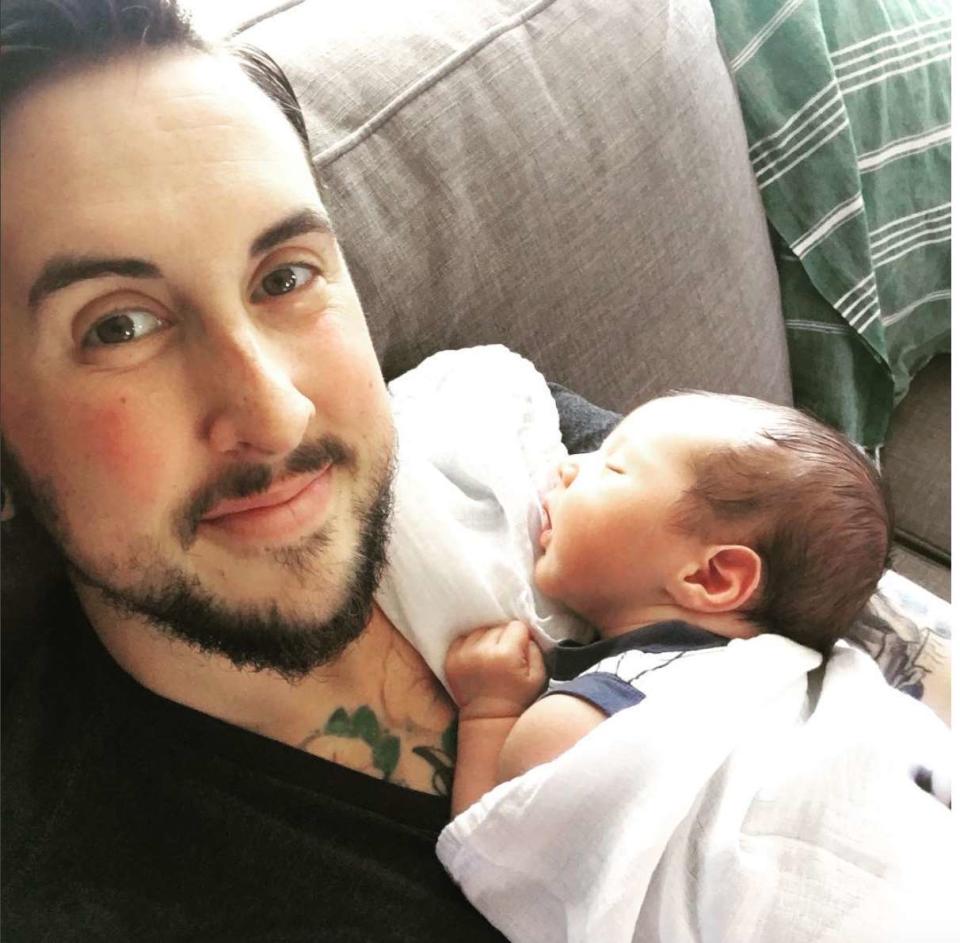Transgender Man Gives Birth to Healthy Baby
Trystan Reese made headlines as a transgender man who gave birth. He told us about his pregnancy—and why his story isn't so out of the ordinary.

When Trystan Reese, a transgender man, first approached his partner, Biff Chaplow, about becoming pregnant with the couple's baby, he was initially met with some hesitation.
Reese had seen friends lead healthy pregnancies as transgender men, and he knew that such a scenario was possible—but Chaplow harbored some valid concerns.
"Initially he was pretty hesitant about the idea," Reese tells Parents. "In fact, I believe the words he used were, 'Absolutely not, this is the dumbest idea you’ve ever had.’ Mostly he was worried for my safety—what it would be like for a pregnant transgender man navigating the world, both medically and socially.”
But the couple did their research, and in doing so, they realized transgender men can (and do!) lead perfectly healthy pregnancies. And so that's exactly what Reese did: He became pregnant as a transgendered man, giving birth to the couple’s son, Leo in 2017.
Related: Here's What I Want People to Know About Trans and Nonbinary Pregnancies
Achieving Pregnancy as a Transgender Man
While Reese’s hormonal therapy gave him a beard and a deeper voice, his uterus and ovaries continued to function. The process of getting off testosterone hormones wasn’t so different from what most people born biologically female face when they stop taking birth control before conception. About five months later, Reese was pregnant.
He describes his experience as a ‘textbook pregnancy,’ complete with fatigue, morning sickness, third-trimester discomfort, and eventually a healthy delivery.
“The conception part just happened, the two of us at home, the old-fashioned way. I’m really lucky, the people at Kaiser [Permanente] have worked really hard on their trans competency. I received incredibly respectful, knowledgeable, competent care throughout my entire prenatal process,” Reese comments. “I told my doctor, ‘It’s my goal to be the most boring patient you’ve ever seen.' He, of course, laughed because I’m a pregnant man.”
Paving the Way for Transgender Pregnancy
Reese insists that he’s not a pioneer for transgender pregnancy. He says that transgender men carry out successful pregnancies more often than people tend to think. The fact remains, though: Terminology surrounding pregnancy is rarely inclusive of the trans community, and Reese acknowledges that his pregnancy may be a way to start changing that.
Related: What To Know if You're Transgender or Nonbinary and Considering Chestfeeding
"I think back to when my grandmother was alive, she was the only woman in her entire city who drove a car," he points out. "Women didn’t used to drive cars and guess what? Now women can drive cars. Just because something has always been one way, that doesn’t mean that’s the right way or the best way or even the way that serves the most number of people."
"It doesn't bother me," he continues, speaking of the way that's that people may have misconceptions about transgender men and pregnancy. "I just accepted that I’m the one doing something unique. I know that most people, like 99.99% of people who give birth [identify as] women. I can’t really bust into this world and then get mad at them for not really including me. I am the one doing something special. I’m the one who is sort of crashing their party. I thought the respectful thing to do was accept that the language wasn’t always going to include me.”
Fortunately, since Reese's pregnancy, there have been a lot of advancements in the conversation about the need for inclusion in transgendered medical care, for pregnancy and beyond. However, there is still much work to be done, especially for transgendered pregnant and parenting people of color, who face higher levels of discrimination and barriers to reproductive and medical care.
But stories like Reese's are important to share and can make a difference in changing the way the world views pregnancy, parenting, and what a family can look like.
Related: What To Know About Gender-Affirming Care
“I understand that we are not a typical or traditional family,” Reese says. “But I would invite people to just see the many ways in which family has evolved over time. Look at our family and the love and respect that we have for each other. Continue to be open to thinking about all the different ways kids can come into this world and people can love each other.”
For more Parents news, make sure to sign up for our newsletter!
Read the original article on Parents.

